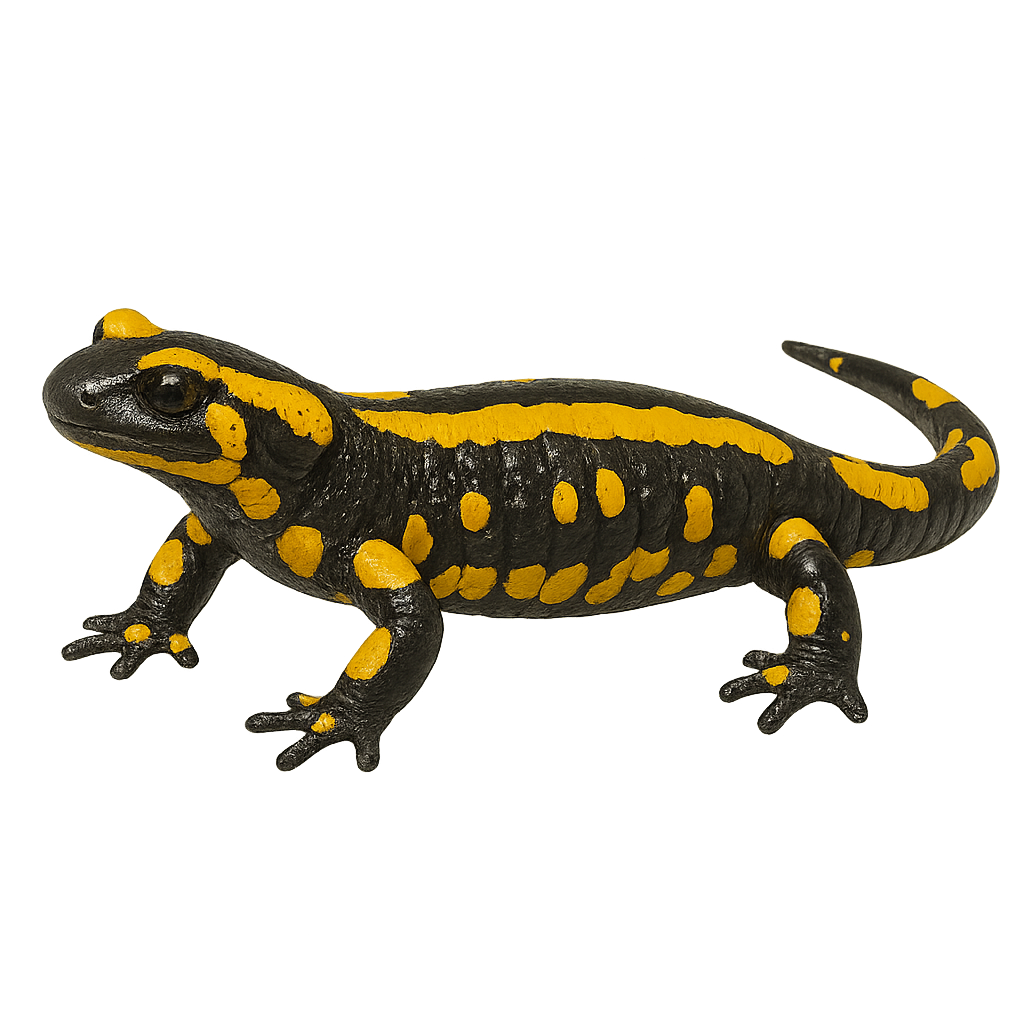Observe and photograph a species in its natural habitat
Learn where and when to observe a species in the wild, how to recognize it in the field, and what habitats it lives in. Get photography tips adapted to its behavior and capture stunning images without disturbing the animal. For full details, open the complete profile in the WildlifePhotographer app.
Spotted Salamander
Scientific name: Salamandra salamandra

IUCN Status: Least Concern
Family: SALAMANDRIDAE
Group: Amphibians
Shyness: Shy
Safe distance: 10 m
Breeding season / Courtship: 01.09-30.11
Gestation: 01.12-28.02
Births: 01.03-30.04
Habitat:
Forests, wetlands
Description:
The Spotted Salamander is an amphibian primarily found in forests and wetlands across Europe, particularly in France, Spain, and Germany. It typically measures between 15 and 25 cm in length, although some specimens can reach up to 30 cm. Its body is black with bright yellow spots, making it easily identifiable. The Spotted Salamander is a nocturnal and terrestrial animal, hiding during the day under rocks or in holes in the ground to protect itself from the heat. It is carnivorous and feeds primarily on insects, worms, small crustaceans, and other invertebrates. While it remains relatively abundant in certain regions, this species is threatened by water pollution, habitat destruction, and climate change.
Recommended lens:
>=Macro
Photography tips:
Use a macro lens to capture the details of the salamander's body, particularly its characteristic yellow spots on a black background.
Photograph early in the morning or after rain, times when the salamander is often active and moving in search of prey, such as insects or worms.
Look for it in humid forests, undergrowth, and near streams, where it prefers cool and shaded areas.
Be discreet and respectful. Do not disturb the animal and avoid handling it. Flash photography can be disturbing, so it is best to photograph without using it.
The Spotted Salamander is a protected species in many regions due to the degradation of its natural habitat and its sensitivity to pollutants. It is essential to respect its environment and minimize disturbances.
Ready to take action?
Choose your platform and start your free trial today



